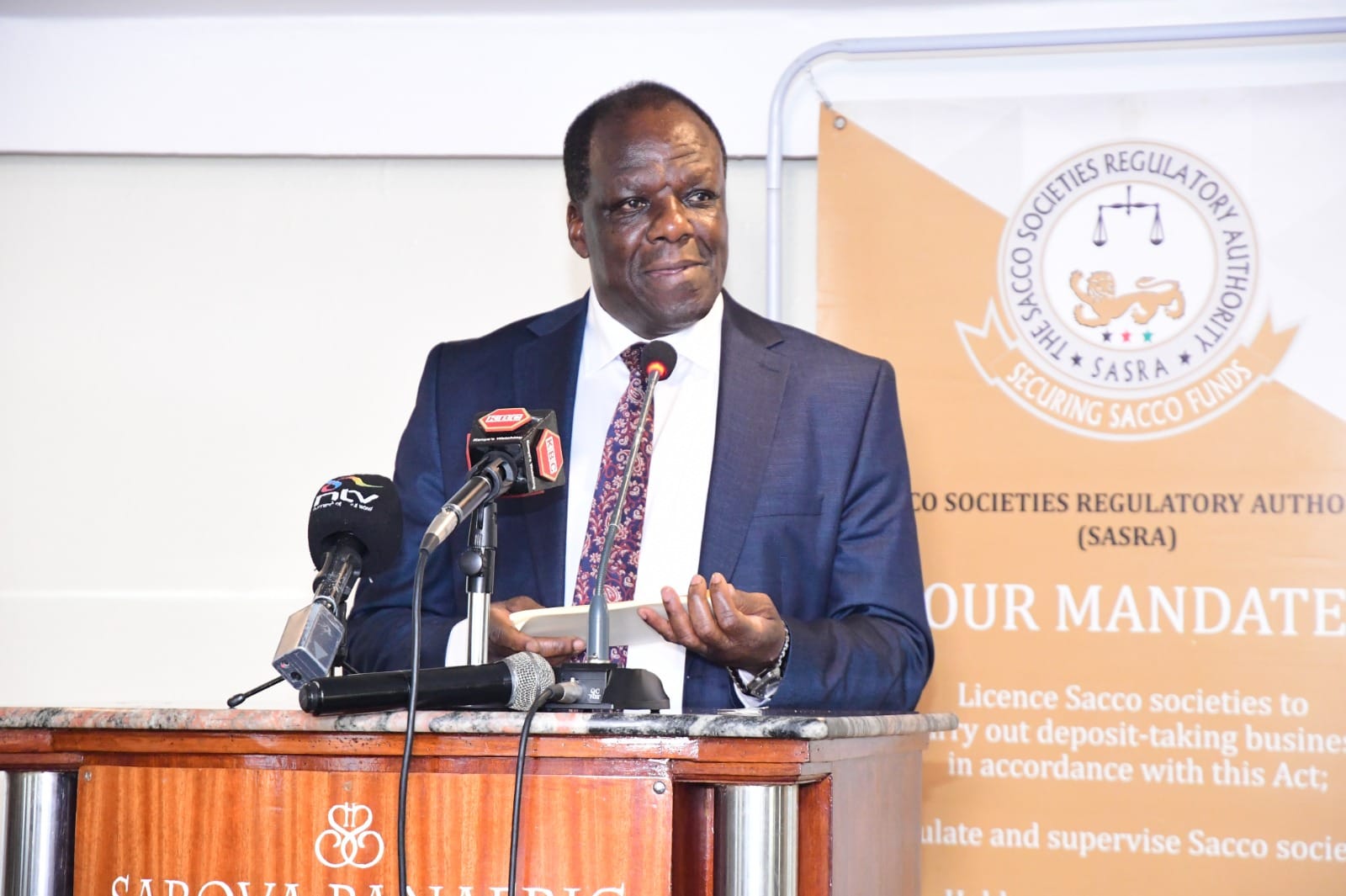In a resounding affirmation of the cooperative movement’s vitality, Kenya’s Savings and Credit Cooperative Organizations (SACCOs) have shattered the Ksh 1 trillion barrier in total assets, cementing their status as a cornerstone of the nation’s financial ecosystem.
The landmark achievement was unveiled by Cabinet Secretary for Cooperatives and Micro, Small, and Medium Enterprises (MSMEs), Wycliffe Ambetsa Oparanya, during the official release of the Sacco Societies Regulatory Authority (SASRA) Supervision Report 2024 at a high-profile event in Nairobi.
Drawing on comprehensive data from 355 regulated SACCOs, the report reveals a robust 10.1% year-on-year growth, propelling combined assets to Ksh 1.08 trillion by December 2024—up from Ksh 971.96 billion in 2023.
This surge not only triples the sector’s value from Ksh 392.8 billion in 2016 but also positions Kenya’s SACCOs as Africa’s wealthiest credit union network, with assets equivalent to approximately US$8.36 billion.
Serving over 6.8 million members—nearly 30 percent of Kenya’s adult working population—the sector now commands 12.5 percent of the banking industry’s total assets and contributes 6.4 percent to the national GDP, underscoring its role in channeling savings into productive investments.
CS Oparanya, whose ministry oversees the cooperative landscape, hailed the milestone as a testament to member-driven resilience amid macroeconomic headwinds.
ALSO READ:
Hope for former KCC workers as gov’t commits timeline to clear unpaid benefits
“The SASRA Supervision Report 2024 demonstrates the SACCO industry’s unyielding growth trajectory, with total assets eclipsing Ksh 1 trillion for the first time, reflecting enhanced member confidence and innovative financial services,” Oparanya stated during the launch, emphasizing the sector’s alignment with the Bottom-up Economic Transformation Agenda (BETA) and Kenya Vision 2030.
He spotlighted key drivers: deposits ballooned 10.7% to Ksh 750 billion, while gross loans expanded 11% to Ksh 842 billion, empowering small-scale entrepreneurs, farmers, and informal workers with affordable credit at rates averaging 12%—far below commercial banks’ 18%.
Core capital nearly doubled to Ksh 219 billion, bolstering lending capacity and enabling average dividend payouts of 10% to members, a stark contrast to banks’ typical 3-5% interest on deposits.
Innovations like digital platforms and the impending Sacco Central liquidity facility, as flagged in the report, have been instrumental, allowing SACCOs to extend branches to 655 across 44 counties—up from 503 in 2022—thus deepening financial inclusion in underserved regions.
Oparanya further noted the sector’s global prowess, quoting the World Council of Credit Unions (WOCCU) data integrated into the report: Kenya’s penetration rate, while promising, lags behind leaders like Ireland at 80 percent, signaling untapped potential for millions more Kenyans.
Yet, the report’s optimism is laced with cautionary notes on emerging vulnerabilities that could undermine this momentum if unaddressed. Non-performing loans (NPLs) edged up to 6.3% of the gross loan book, with provisions for losses surging 26.6% to Ksh 53.1 billion, exacerbated by economic pressures like inflation and household defaults climbing to 16.6% as per the 2024 FinAccess Survey.
ALSO READ:
CS Kagwe launches Orthodox Tea Trading Window to boost export and production
A stark example is the turmoil at the Kenya Union of Savings and Credit Cooperatives (KUSCCO), where panic withdrawals and regulatory probes led to Ksh 13.8 billion in losses for primary SACCOs—equivalent to 7.3% of their core capital—prompting SASRA to mandate earlier impairment recognition.
Fraud incidents totaled Ksh 2.1 billion in 2024, highlighting governance gaps despite SASRA’s rigorous oversight of 178 deposit-taking entities.
CS Oparanya addressed these head-on: “While we celebrate this trillion-shilling triumph, persistent mismanagement and corruption in pockets of the sector demand fortified governance; the Ministry will intensify legal reforms and professionalization to safeguard member funds,” he affirmed, calling for the swift operationalization of the Deposit Guarantee Fund to insure deposits up to Ksh 500,000.
Looking ahead, the report advocates for technology integration, including blockchain for remittances and AI-driven risk analytics, to fortify stability. As SACCOs evolve from grassroots savings clubs to sophisticated financial powerhouses, today’s release not only chronicles a historic leap but ignites a blueprint for sustainable prosperity, potentially elevating Kenya’s cooperatives to contribute over Ksh 1.5 trillion to GDP by decade’s end.
For businesses eyeing partnerships, this milestone opens avenues in agribusiness financing and MSME lending, promising ripple effects across Kenya’s economy.
By David Kipkorir
Get more stories from our website: Sacco Review.
For comments and clarifications, write to: Saccoreview@
Kindly follow us via our social media pages on Facebook: Sacco Review Newspaper for timely updates
Stay ahead of the pack! Grab the latest Sacco Review newspaper!



